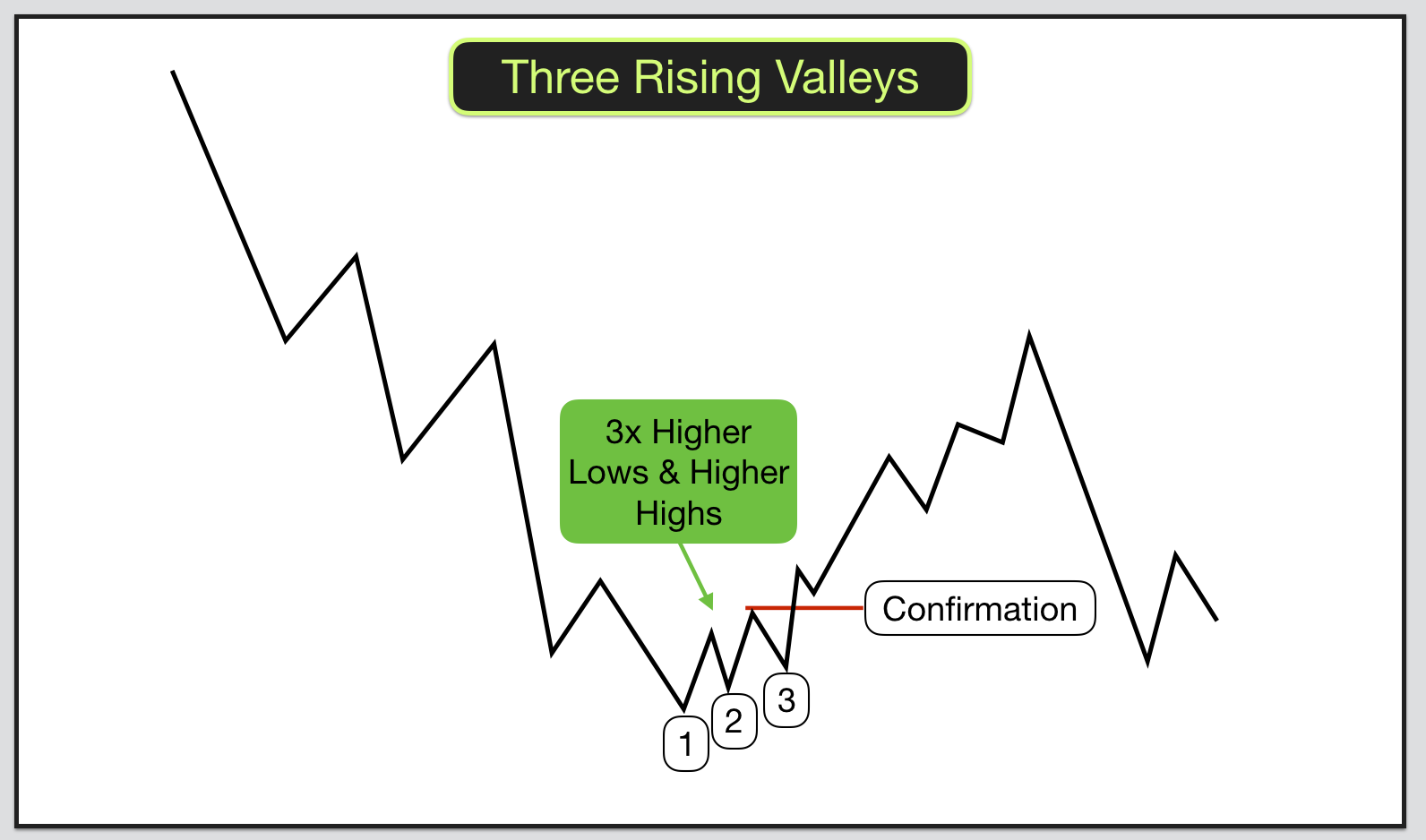A common pattern seen at or near bottoms is the Three Rising Valleys.
Normally the three rising valleys chart pattern will form after or at the end of a previous downward trend.
Identifying Three Rising Valleys chart pattern
As the name of the chart pattern implies we are looking for three valleys with each of the three lows being progressively higher. They are often identified as three quite pronounced and narrow (compared with the previous trend) peaks and troughs.
To signal the end of a trend we are looking for a market to start making higher highs and higher lows, the three rising valleys gives us this signal. Three valleys with higher highs and higher lows.
You can find these patterns on all chart timeframes. If in doubt then have a look at one timeframe higher (Current Timeframe x 5). You will normally see the peaks and troughs forming the three rising valleys as a series of rising candlesticks.
If one of the series of three valleys is lower than the last then this invalidates the pattern. If one of the highs in the pattern is lower than the last then this invalidates the pattern.
The three valley lows do not necessarily have to form a perfect upward sloping trend line.
Trading Three Rising Valleys Chart Pattern
The pattern confirms when price closes above the high of the second peak and after the third rising valley. This is the entry signal.
Pay attention to any trend line from the previous move down. If this is just above your confirmation entry price then wait until the trend line is breached before entering.
Tall patterns tend to perform better than short ones. Narrow patterns tend to perform better than wide ones.
The profit target is the difference between the confirmation price (highest high in the pattern) and the lowest low (lowest valley low).
Pullbacks appear after these patterns more often than not in my experience. Price should not pullback and close lower than the highest low (3rd valley low) in the pattern. Make your stop either just below this highest low or below the lowest low if the valleys are short and tight.

